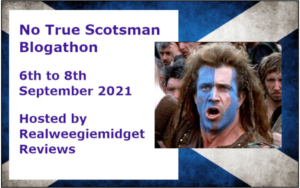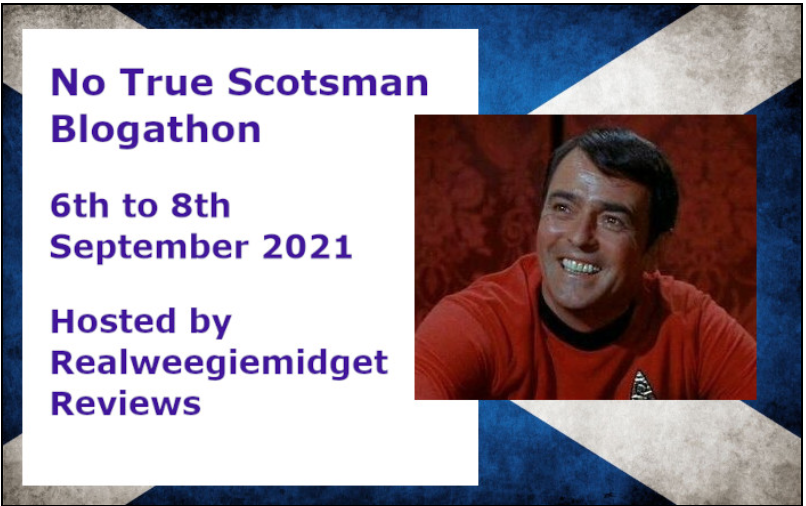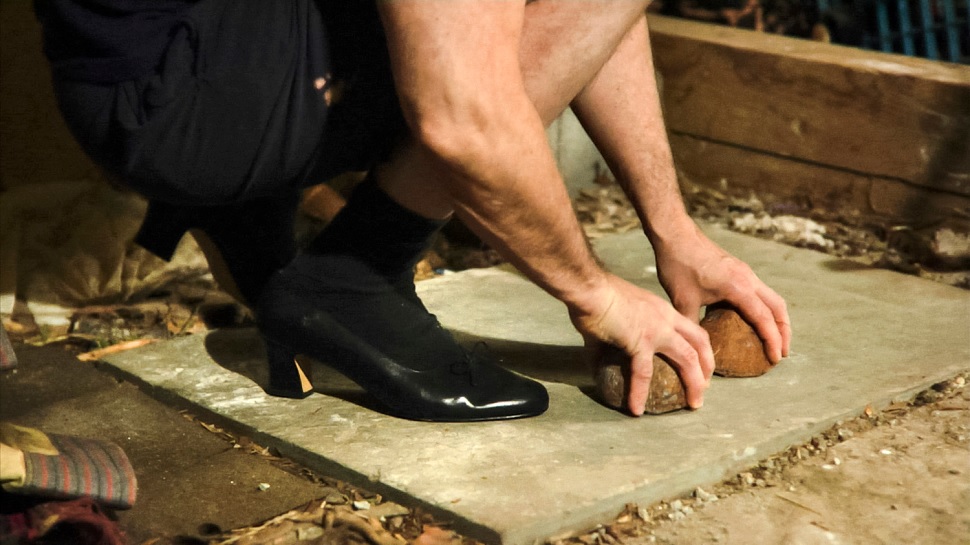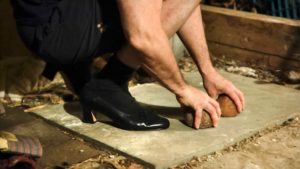No True Scotsman Blogathon
Posted on September 10, 2021 at 9:23 am
A real Scottish accent is a joy to listen to and very difficult to imitate. Hollywood has not always managed an accurate Scottish accent (of course there are many different accents in Scotland, just like in every other country). So, why not have a blogathon paying tribute to the good, the bad, and the ugly of Scottish accents attempted by non-Scottish actors? The film critic known as Realweegiemidget Reviews put out the call, and film bloggers responded.
The invitation:
The world of film and TV, is as we know full of the variety of international life as we know it. This meaning that actors and actresses, sometimes have to go out of their comfort zone and try a new accent. This is usually like the nursery rhyme says, ie it can be “good, very good” or when “it’s bad it’s horrid”.
So this blogathon topic is one close to my Scottish heart. It’s loosely based on the No True Scotsman fallacy as described HERE… For your mission (should you choose to accept it), is to review a film, TV Movie, TV episode or TV series with a Scottish character in it and with a Scottish accent… BUT before you send me your Sean Connery / Gerard Butler / Sam Heughan / James McAvoy themed request, there is a catch…
This wee proviso is found here, in Darlin Husband’s full definition of the blogathon…
“An actor or actress playing a Scot even though they themselves are not Scottish”
These characters’ “accents” can be from anywhere in Scotland, good or bad and from any year or genre. BUT Please check IMDb first to make sure your character is not actually played by a Scot first. (I will not be accepting James Bond films as only Sean Connery gave him a Scottish accent and as we all know he was as Scottish as Billy Connolly).
I got a kick out of the post about “McMillan and Wife,” the Rock Hudson and Susan Saint James show I loved in the 70s.
Dell wrote about something called “Loch Ness Horror.”
“When Nessie showed up I was besides myself with giddiness. This thing is American B-movie ingenuity at it’s finest. It takes the movie from being run of the mill, forgettable trash, to so bad it’s awesome!”
Of course “Highlander” had to be included, and it was good to get the take of a real Scot.
“Highlander is a great-looking, funny and often dazzling fusion of The Terminator with sword and sorcery; if it seemed indigestible to critics in 1986, perhaps the time has come to embrace the story of Connor Macleod.”
More on “Highlander” from Stabford Deathrage.
“I’m not sure where this film actually takes place, but it’s the most amazing location, because everywhere you go during the present day, you hear Queen, and everywhere you go in the past, it looks like the Safety Dance.”
A deep cut from Caftan Woman! An episode of the classic early TV show “Wagon Train.”
“Accent-wise, Jeannie gives her Scottish characters a lovely soft lilt most pleasant to hear. Her inflection has that slightly foreign feel yet at the same time is comforting. You can understand producers wanting to utilize that aspect of Jeannie’s ability.”
The Taking Up Room site looks at “Christy.”
“One of the most popular characters on the Christy TV show was, by far, Doctor Neil MacNeill, and one of the most popular show arcs was the triangle between Christy (Kellie Martin), Neil and preacher David Grantland (Randall Batinkoff). Neil was wonderfully played by Stuart Finlay-McLennan, who seemed to burr with the best of ’em.
Only one thing: Finlay-McLennan is an Australian from New South Wales. His burr was about as Highland as Scotch tape.”
“Brigadoon,” of course, from The Classic Movie Muse:



